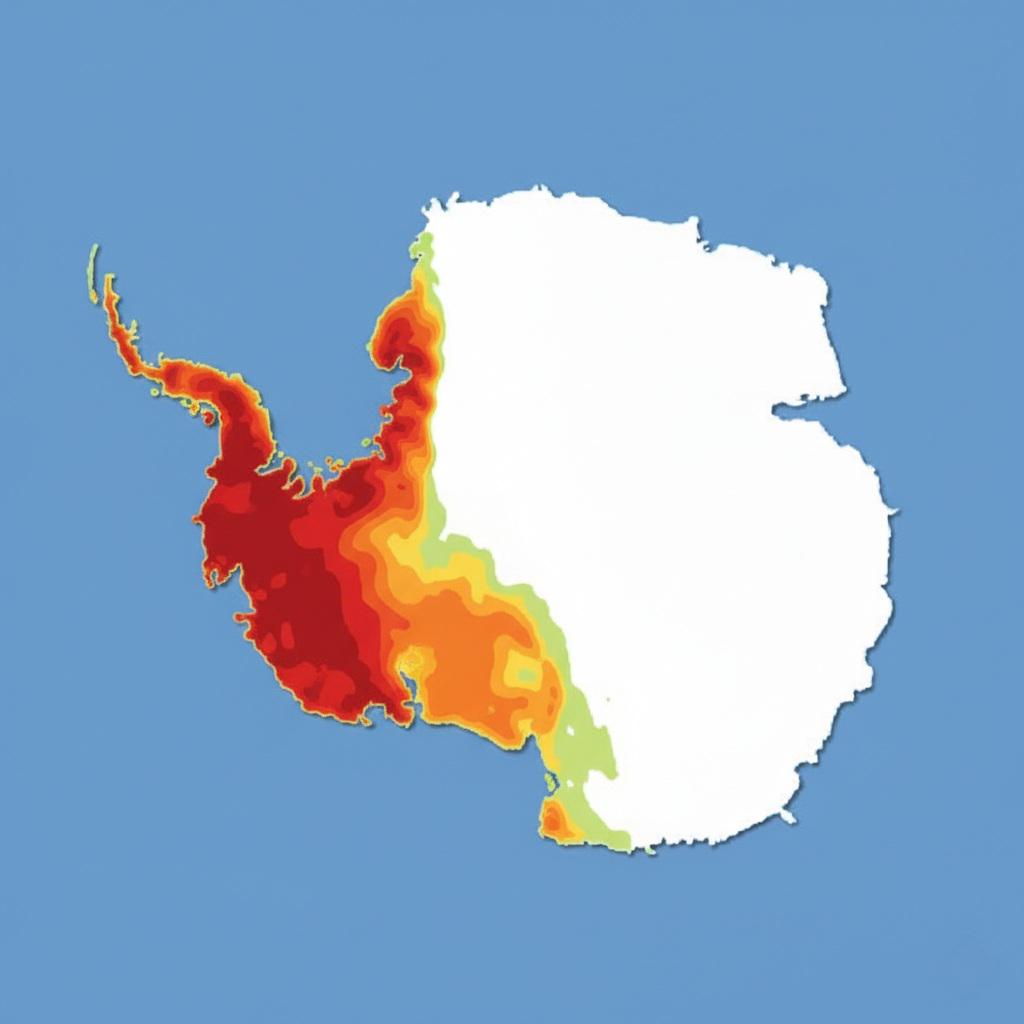Map of Most Visited Areas of Antarctica


Alex Cartwright
Senior Cartographer & GIS Specialist
Alex Cartwright is a renowned cartographer and geographic information systems specialist with over 15 years of experience in spatial analysis and data...
Geographic Analysis
What This Map Shows
This map visualizes the most visited areas of Antarctica on an annual basis, highlighting the regions that attract the most tourists, researchers, and adventure-seekers. As the southernmost continent, Antarctica offers a unique and largely untouched environment, drawing interest from various sectors, including tourism, scientific research, and environmental conservation. Understanding the patterns of visitation not only informs us about human interactions with this icy expanse but also sheds light on the impacts of climate change and conservation efforts in such a fragile ecosystem.
Deep Dive into Antarctic Tourism
Antarctica, with its striking landscapes of glaciers, icebergs, and diverse wildlife, has become increasingly popular among tourists over the past few decades. Interestingly, the continent welcomed approximately 74,000 visitors in the 2019-2020 season, a number that has fluctuated significantly due to global events, including the COVID-19 pandemic. Most visitors come during the austral summer months from November to March, when temperatures are milder and daylight is plentiful.
What’s fascinating is the concentration of tourist activity in specific areas, primarily around the Antarctic Peninsula. This region accounts for about 80% of all tourist landings. Places like Port Lockroy and Paradise Bay are particularly popular, with visitors drawn to their stunning scenery and opportunities for wildlife watching, including seals, penguins, and even whales. Port Lockroy, specifically, is home to a historic British research station that now operates as a museum and post office, making it a unique stop on many itineraries.
However, the increasing number of visitors raises concerns about the environmental impact on this delicate ecosystem. Human presence can disrupt wildlife and contribute to the degradation of fragile habitats. In response, the International Association of Antarctica Tour Operators (IAATO) has implemented guidelines to help mitigate these effects, promoting responsible tourism practices and limiting the number of visitors to sensitive sites.
Moreover, scientific research plays a crucial role in understanding Antarctica’s changing environment. The continent is often referred to as the 'canary in the coal mine' for climate change, and research stations are strategically located in areas that are critical for monitoring environmental changes. The data collected not only informs us about shifts in biodiversity but also helps predict global climate patterns.
Regional Analysis
Breaking down the map, we can identify several key regions that see significant visitation. The Antarctic Peninsula, as mentioned, stands out as the most visited area, with hubs like Ushuaia, Argentina, serving as the main departure point for Antarctic cruises.
In contrast, the Ross Sea region, while rich in historical significance and biodiversity, sees far fewer visitors. This area is home to McMurdo Station, the largest research station on the continent, and has been crucial in historical scientific missions. However, due to its remote location and harsher weather conditions, it remains less accessible to tourists compared to the Peninsula.
Another notable area is the Weddell Sea, which has become increasingly significant due to the discovery of the Larsen C Ice Shelf and the subsequent calving of the A68 iceberg. This region attracts researchers focused on studying ice dynamics and its implications for sea-level rise.
Interestingly, the sub-Antarctic islands, such as South Georgia and the South Sandwich Islands, also see a fair amount of visitation, primarily for their rich wildlife, including large populations of seabirds and seals. These islands are often included in longer expeditions and offer a different perspective on the Southern Ocean's ecosystems.
Significance and Impact
Understanding the visitation patterns in Antarctica is crucial for several reasons. Firstly, it highlights the growing interest in remote and extreme environments, reflecting broader trends in adventure tourism. As more people seek unique travel experiences, the pressure on these pristine areas will likely increase, necessitating robust management strategies.
Moreover, the implications of climate change in Antarctica are profound. The melting ice sheets and changing ecosystems can have global repercussions, affecting sea levels and weather patterns worldwide. By studying the most visited areas, researchers can better understand the impacts of human activity and climate change in real-time.
As we look to the future, it’s essential to balance tourism with conservation. The trends indicate that interest in Antarctica will continue to rise, making it imperative for stakeholders to implement sustainable practices that protect this extraordinary environment while allowing for human engagement. In doing so, we can ensure that future generations have the opportunity to experience the awe-inspiring beauty of Antarctica responsibly.
Visualization Details
- Published
- October 16, 2025
- Views
- 48
Comments
Loading comments...